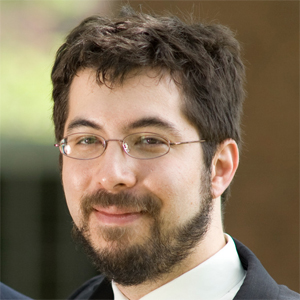Team:NYMU-Taipei/synthetic-neurobiology
From 2011.igem.org
(→References) |
|||
| Line 65: | Line 65: | ||
'''<font size=5>For More Vivid Explanation Of Our Ideas,''' | '''<font size=5>For More Vivid Explanation Of Our Ideas,''' | ||
| - | '''Please Follow Our Presentation On Asian Regional Jamboree</font>''' | + | '''Please Follow Our Presentation On Asian Regional Jamboree :)</font>''' |
| + | '''<font size=7><font color=orange>SEE YOU GUYS AROUND 10/15~10/16</font></font>''' | ||
Revision as of 04:05, 6 October 2011

Contents |
Neurobiology: About
Neuroscience or neurobiology is the scientific study of the nervous system. Being among the most vibrant areas in biological sciences, they are promising in pushing new frontiers in biotechnology. New discoveries in these fields usually lead to realization on how little we know about the whole system. Neurobiology is a truly challenging area but at the same time very exciting. Once we decrypt the mysteries within the brain, we will be able to treat patients with neurological diseases with better approaches.
The Sparkle When Synthetic Biology Meets Neurobiology
Professor Edward Boyden leads the Synthetic Neurobiology Group to develop tools for controlling and observing the dynamic circuits of the brain. They use the neurotechnologies to understand how cognition and emotion arise from brain network operation and to enable systematic repair of intractable brain disorders. The tools invented by his group include a suite of 'optogenetic' tools, which have been used in many labs around the world, for activating or silencing neurons with light. These tools enable the assessment of how specific neurons contribute to brain functions. The sparkle of synthetic biology and neurobiology shone in one daily conversation written in Professor Edward Boyden’s blog, ‘A few weeks back, Biological Engineering department chair Doug Lauffenburger declared to me, "What you're doing is synthetic neurobiology,"’. And this drew parallels between his lab's work and synthetic biology.
Synthetic Neurobiology Group
Synthetic neurobiology group led by Professor Edward Boyden mainly devotes to six research projects.
- Cell-Type-Specific Optical Neuromodulation Interfaces: They developed optogenetic molecular methods for making neurons able to be activated or silenced by multiple colors of light, hoping to stimulate and inactivate neurons precisely from one to many at a time, and with more complex spatiotemporal patterns.
- Gene Therapy Devices: They are developing fluidic systems to facilitate viral delivery in complex tissues since gene therapy is increasing its importance in years to come.
- Molecular Sensitizers for Optical Manipulation of Biological Systems: They have engineered molecular sensitizers making genetically specified neurons can be activated and silenced by differently-colored pulses of light.
- Non-Invasive, Focal, and Portable Brain Stimulators: They are applying modern engineering techniques to create a portable, focal, non-invasive brain stimulator that enable a new platform for therapeutic neuromodulation.
- Principles of Controlling Neural Circuits: By using cell-type-specific optical neural control technologies , they are seeking to discover new principles for treating neural disease.
- Real-Time Data Mining and Perturbation: They propose to design and develop a system that continuously generates novel data-modeling hypotheses and evaluates them in real time, testing models of ever-increasing complexity on data as it comes in.
The Similarities and Differences Between Our Project and Synthetic Neurobiology Group
The similarity between our project and research in synthetic neurobiology group includes our devotion to developing one non-invasive, focal, and portable brain stimulators, which can apply to future therapeutic neuromodulation. We both use some standardized sets of bioengineering parts, and some design rules for creating the novel neurobiological systems, which make sense and work in a predictable way.
Though we have the same final goal, there are some differences in the design circuits. The main part of the research in synthetic neurobiology group uses optogenetic molecular methods for making neurons able to be activated or silenced by multiple colors of light. In this part, the biochemical circuits mainly dominate the whole process. However, in the other hand, we use the mechanic force to induce the light by changing the conformation of the transmembrane protein.The induced fluorescence phenomenon is directly using physical approach instead of using the traditional biochemical circuits. (See Optomagnetic design) The circuit concepts we come up with combine both physic and biochemical views; we use physical force to drive the circuit hoping to light up the neurons immediately while biochemical reaction usually take much more time.
The Circuit Theory
The circuit we developed might be challenged due to the pioneer design for combining physics and biochemistry together since the current research in synthetic biology mainly based on fundamental biochemistry. However, we have our own defense. The broad definition of circuit is a series of accomplishing work by any means of routing matter through a loop. Since we have met the criteria of synthetic biology, (that we use standardized bioengineering parts, and some design rules for creating the novel biological systems,) the multidiscipline design for our attempt should not be eliminated through the narrow definition of traditional biochemical circuit in synthetic bioengineering.
Future
In the future, we hope our design can successfully function as non-invasive, focal, and portable neuron stimulators. It can be developed to understand the neural network and father enable systematic treatments for neurological disorders, or diseases associated with neuron. Though the methods are different, it’s really our pleasure to know we are on the same path with those remarkable scientists around the world. We will do our best to fulfill our final goal.
References
- Boyden, E. S. (2007) Synthetic Neurobiology. Ed Boyden's Blog. Technology Review. (http://www.technologyreview.com/blog/boyden/21871/).
- Ed Boyden, Ph.D., Synthetic Neurobiology Group (http://syntheticneurobiology.org/)
For More Vivid Explanation Of Our Ideas, Please Follow Our Presentation On Asian Regional Jamboree :) SEE YOU GUYS AROUND 10/15~10/16
 "
"







